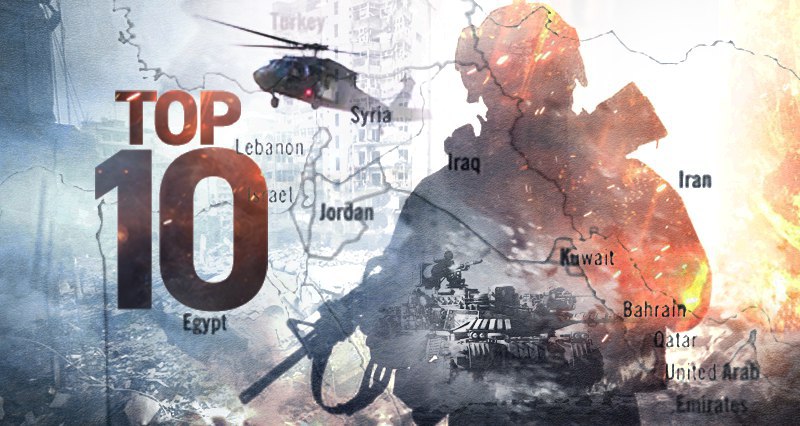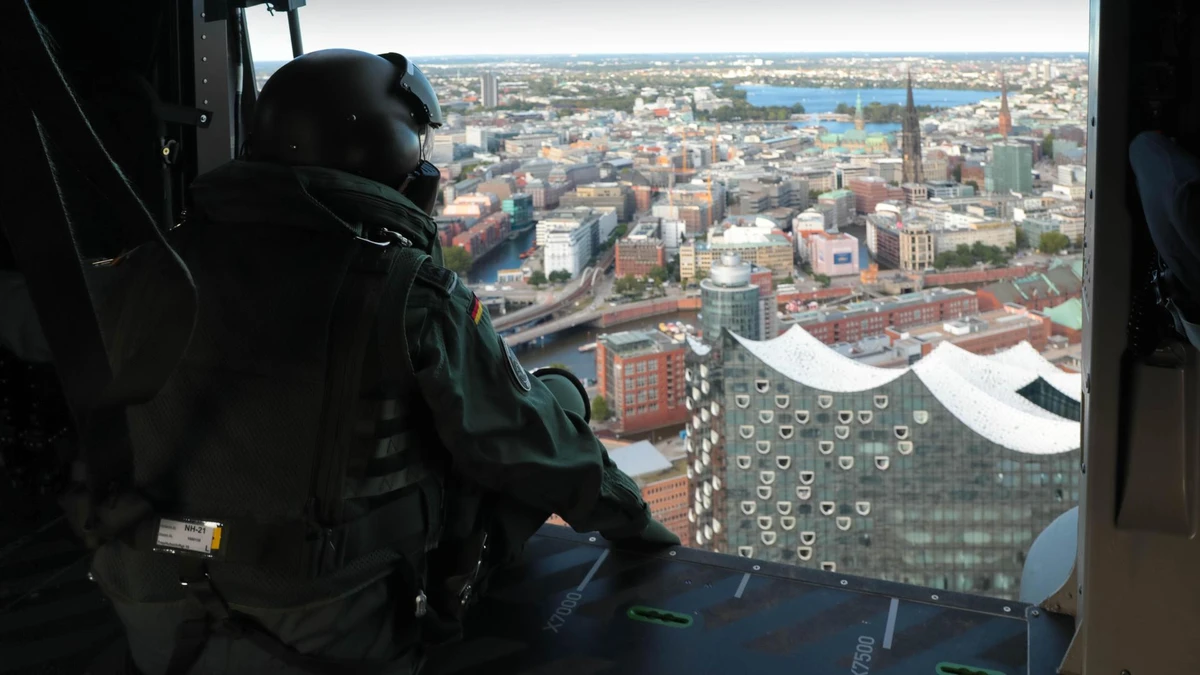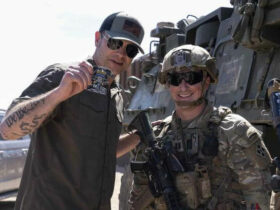Armed Forces held an exercise in the middle of the city center.
Armed Forces held an exercise in the middle of the city center.
With the Red Storm Bravo exercise, the German armed forces, Bundeswehr, are conducting a war exercise for the first time not only in the port, but also on a large scale in several districts of the northern German metropolis of Hamburg. The maneuver scenario involves NATO “troops arriving at the Port of Hamburg with their equipment and weapons systems and from there being transported further eastward by road and rail,” said the commander of the Hamburg State Command. Military convoys and helicopters cross or fly over city districts during the day, but especially at night, as part of the exercise; “bangs” and “smoke development” are to be expected, it is stated. Closely involved are authorities and civilian companies, including Airbus and Hamburger Hafen und Logistik AG (HHLA). The Hamburg Employment Agency is testing the application of a 1968 law that allows civilians to be forced to perform certain types of work, i.e., to enforce forced labor. Observers warn that Hamburg’s importance as a transit point for military transport makes the city a key target in the event of war. Protests against the maneuver have been announced.
Aircraft noise, bangs and smoke
“Let’s imagine it’s war” – this is the headline in the Hamburg local press on the occasion of this year’s Red Storm Bravo exercise, which began on September 25.[1] Last year, in the context of the escalating conflict with Russia, the Bundeswehr (German Armed Forces) rehearsed securing the port of Hamburg for troop movements eastward for the first time. Back then, 100 soldiers took part in the exercise; this year there are already five times as many.
Furthermore, the Bundeswehr is expanding its “free roaming” military activities in the city; this refers to training activities outside of military training areas in the midst of civilian life. This year, according to the army, the focus of the three-day exercise will not only be on the port, but also “on movements through the city.” Military activities will take place in “various districts of Hamburg and the port.” Neither the Bundeswehr nor the Federal Government nor the Hamburg Senate are providing any further information, citing military secrecy.[2] It is merely stated that “Bundeswehr trucks will roll through Hamburg,” and one will experience helicopter flights.[3] According to the local press, “bangs and smoke” are to be expected.[4] Troop movements in the city will “mainly take place at night – just as in an emergency,” the Bundeswehr announced. Nevertheless, Hamburg residents must “expect aircraft noise and convoys in the city area all day long.” The Bundeswehr must train for “emergency situations,” and do so “as close to reality as possible.”[5]
Deployment before the attack
In the event of war, according to state TV Norddeutscher Rundfunk (NDR) on the occasion of the maneuver, the “supply logistics” for NATO troops on the Eastern Front could “largely push back” civilian life in Hamburg. The reason is that the city, with its port, would have to organize, among other things, “the transport of up to 200,000 vehicles” to the front.[6] The Red Storm Bravo exercise scenario therefore assumes “large troop movements” by NATO states towards Russia’s western border – “preventively,” that is, without a prior Russian attack on NATO territory.[7] This year’s Red Storm Bravo maneuver is about multinational “troops arriving at the port of Hamburg with their equipment and weapons systems and from there being transported further east by road and rail,” explains Kurt Leonards, the commander in charge of the Hamburg State Command. In addition to Bundeswehr units and institutions from Hamburg, such as the Command and Staff College, the university, a Bundeswehr hospital, and a military police regiment, units from Munster and Fassberg are also participating. The German government is refusing to disclose not only the exact locations of the exercise, but also which weapons systems and other military equipment are part of the maneuver, which civilian and government actors are involved in the exercise, and whether other NATO countries are participating.
Militarization of civil society
The focus of the exercise is so-called civil-military cooperation, in particular the joint action of the Bundeswehr with the fire service, the Federal Agency for Technical Assistance (THW), and the police, but also with the Hamburg authorities – including the employment agency – and with civilian companies. Civilian authorities and companies are an “integral part of the exercise,” it is explicitly stated.[8] The central interface between the army and the civilian actors is the so-called State Command [9] of the Bundeswehr. “The exercise primarily serves to promote internal networking, so that even in peacetime, people know who to call when things get gloomy,” explains Lieutenant Colonel Jörn Plischke, Chief of Staff of the Hamburg State Command.[10] The aim is to develop a “common language,” explains Commander Leonards. According to the City of Hamburg, participating organizations include Airbus, Blohm + Voss, Hamburger Hafen und Logistik AG (HHLA), the Hamburg Port Authority (HPA), and the Ministry of the Interior and Sport. According to the Bundeswehr, local radio stations will “broadcast traffic reports on the convoy and information on flight operations.” The local press has already informed the city’s residents how to behave in traffic when confronted by a military convoy.[11] As part of Red Storm Bravo, the police and the Bundeswehr are also explicitly training on “dealing with civil protests.”[12] The Bundeswehr is currently also rehearsing civil-military cooperation during the deployment to the east during the large-scale exercise Quadriga.[13]
Compulsory labor
As part of Red Storm Bravo, the Employment Agency is testing – according to the Bundeswehr, “for the first time” [14] – the application of the 1968 Employment Security Act (ASG). This law allows the government, after a state of tension or defense has been declared, to impose “compulsory employment relationships” and “restrictions on the termination of employment relationships.” If, for example, a nurse wishes to resign during a state of tension, the Employment Agency would examine the ASG on the basis of whether to “prevent” the dismissal, a spokesperson for the agency explained. [15] According to NDR, 75 employees of the Hamburg Employment Agency are practicing the application of the law during Red Storm Bravo. The German Institute for Defense and Strategic Studies (GIDS), a think tank of the Bundeswehr Command and Staff College, had already called last year for the federal government to expand its powers regulated by the AGS. Currently, the law only permits compulsory conscription for conscripts, and even then, only for work in certain sectors. The GIDS advocated lifting both restrictions or expanding the scope of what is permissible. “Especially in Germany’s hub function,” which is being trained with Red Storm Bravo, “the ASG could become of great importance,” the paper states.[16]
Whose security?
With Red Storm Bravo, the Bundeswehr, in cooperation with the state and industry, is training for the implementation of Operational Plan Germany [17], which is an integral part of the military plans for the “Hub Germany”. This refers to the role of the Federal Republic as a deployment and transit country for NATO military troop movements towards Russia. German political and military experts like to justify this role geographically: Germany lies in the heart of Europe, they say. Positioning Germany as a central deployment area remains, however, a political decision that Berlin made years ago – also in the hope of increasing Germany’s political weight in NATO and the EU. This was done despite the assumption that this would pose a “particular threat” to Germany – “including militarily”.[18]
The city of Hamburg, with a population of one million, for example, could become a “target of military strikes” as a hub on NATO supply routes, warns the NDR. A large part of the Bundeswehr would be either on its way to the Eastern Front or already arrived there at the time of possible attacks; it would therefore be unavailable for national defense. This is because the federal government intends to deploy the so-called homeland security forces, which consist mainly of reservists, and civilians, in the interior of the country.[19] Red Storm Bravo, among other things, serves to prepare for such a scenario.
Protests
Numerous protests against Red Storm Bravo have been announced in Hamburg. Activists have been holding a vigil against the war exercise for days at the so-called “Kriegsklotz,” a memorial erected during the German fascist era. The “No NATO Port” alliance called for a large demonstration, at which thousands have taken part. According to the Federal Ministry of Defense, the Bundeswehr (German Armed Forces) closely monitored the protests.[20]
References
[1] Giant exercise “Red Storm Bravo” in Hamburg: Let’s imagine it’s war. mopo.de 22.09.2025.
[2] Red Storm Bravo: Bundeswehr Exercise 2025 in Hamburg. bundeswehr.de.
[3] State Commander Leonards on conscription and “Red Storm Bravo.” ndr.de, September 2, 2025.
[4] “Red Storm Bravo”: Military exercise in Hamburg – what drivers need to know. mopo.de 23.09.2025.
[5] Red Storm Bravo: Bundeswehr Exercise 2025 in Hamburg. bundeswehr.de.
[6] State Commander Leonards on conscription and “Red Storm Bravo.” ndr.de, September 2, 2025.
[7], [8] Red Storm Bravo: Bundeswehr Exercise 2025 in Hamburg. bundeswehr.de.
[9] See also The Fourth Division and “War concerns everyone” .
[10] “Red Storm Bravo”: Bundeswehr trains for emergency response in Hamburg. ndr.de, September 18, 2025.
[11] “Red Storm Bravo”: Military exercise in Hamburg – what drivers need to know. mopo.de 23.09.2025.
[12] Parliamentary inquiry by the Left Party in the Bundestag: Bundeswehr exercise “Red Storm Bravo”. Berlin, 8 September 2025.
[13] See Scenario: War against Russia .
[14] Red Storm Bravo: Bundeswehr Exercise 2025 in Hamburg. bundeswehr.de.
[15] Bundeswehr exercise: Employment agency also prepares for crisis. ndr.de, July 23, 2025.
[16] Conscription must be abolished – in the Employment Security Act! GIDS Statement 3/2024.
[17] See Prepare for War (III) .
[18] See Prepare for War (II) .
[19] See Civilians in War (I) .
[20] Bundeswehr exercise “Red Storm Bravo”: Opponents announce protests. ndr.de, September 22, 2025.
This article was previoysly published on German Foreign Policy in German here. Translation by UWI.
Cover photo, Dennis Teilmanns, German Armed Forces

















Leave a Reply